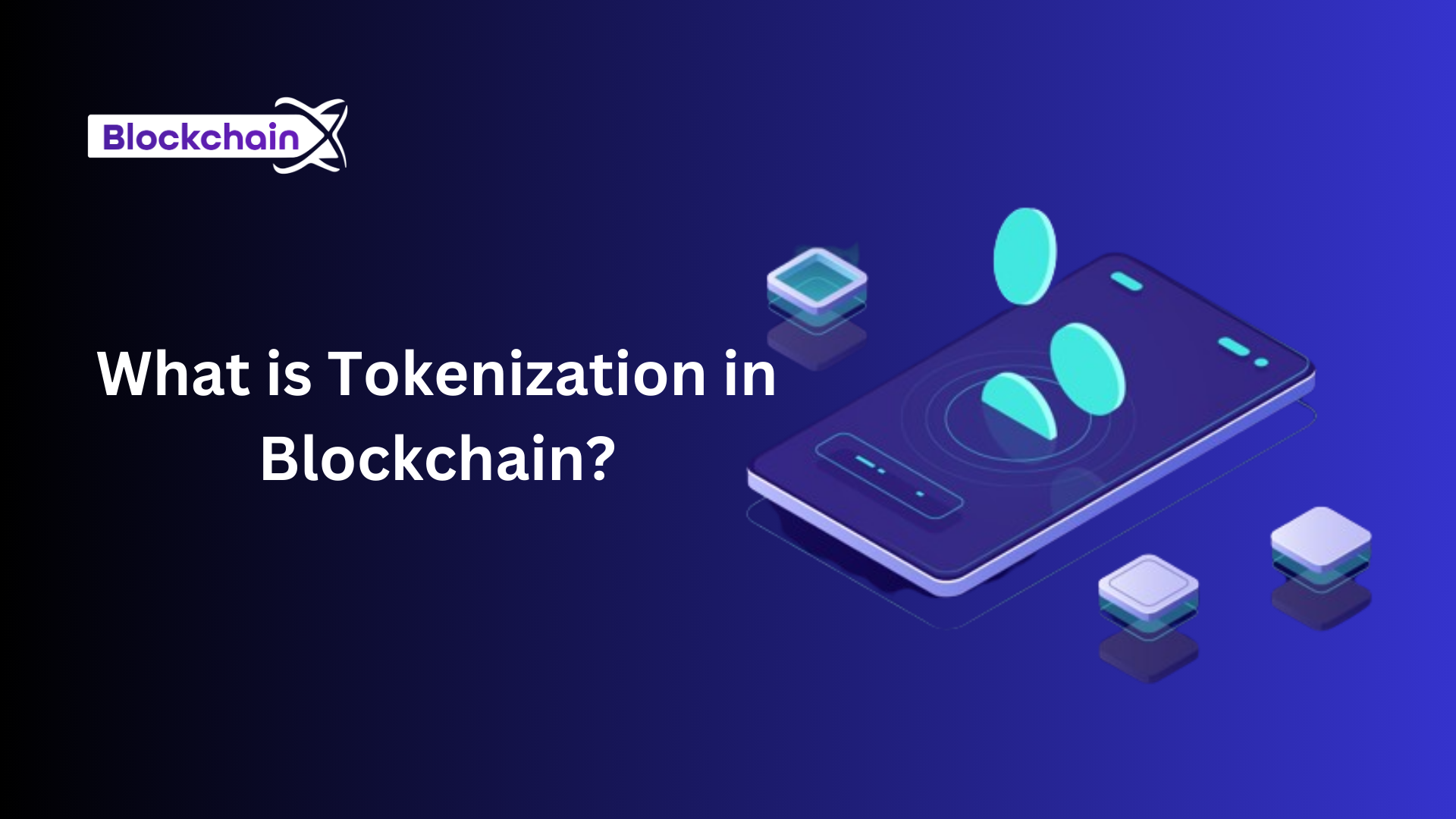How Does Tokenization Work in Blockchain?
 kishore senthil
kishore senthil
Tokenization is a topic of great interest today, especially in the blockchain sector, the technology that powers cryptocurrencies like Bitcoin . Crypto tokens not only symbolise ownership, but also give access to various classes of digital assets that would otherwise be inaccessible through traditional means.
What is tokenization?
Tokenization is a change interaction that switches the privileges over completely to a resource into a token on a blockchain. This procedure is not limited to a single type of asset, but covers a wide range of assets, both physical, such as real estate and works of art, as well as digital, such as intellectual property.
These are the key aspects of asset tokenization:
Fractional ownership
Tokenization introduces the concept of fractional ownership, whereby an asset can be divided into tokens that represent shares of the underlying resource.
This model allows multiple individuals to own a portion of the asset, democratising investment opportunities that were traditionally accessible to a few due to high costs or barriers to entry.
With fractional ownership, buying and selling shares of an asset becomes much easier, increasing the liquidity and marketability of the asset.
Liquidity and accessibility
One of the main benefits of computerised resource tokenization is further developed liquidity. Tokenized resources can be exchanged on optional business sectors, making it simpler for financial backers to open and close positions.
Availability is likewise enormously improved, as tokenization opens up venture valuable open doors to a more extensive crowd, permitting cooperation in business sectors that were previously unattainable for some because of monetary imperatives or market illiquidity .
Transformation of multiple industries
The capability of resource tokenization is colossal and has grabbed the eye of many huge organizations. Many industry leaders have recognized that asset tokenization can have a profound impact on projects, companies and sectors, including the global stock market.
The adoption of asset tokenization is not just a future possibility, it is something that is already happening today. Organizations, for example, Microsoft have reported or sent off tasks to tokenize modern resources and protections.
Blockchain Tokenization: Overview
The blockchain ecosystem makes it easy to create various types of tokens. These include, for example, stablecoins, which are cryptocurrencies linked to real-world currencies to maintain a stable value, and NFT (non-fungible token), which serve as digital proof of ownership of unique items or assets.
The potential market for tokenization is huge. According to a report by Boston Consulting Group, the total size of tokenized illiquid assets could increase to $16 trillion by 2030, or 10% of global GDP. These illiquid assets include pre-IPO stocks, real estate, private debt, small and medium-sized business income, physical art, exotic beverages, private funds, wholesale bonds, and many more .
This turn towards tokenization isn't elite to establishments, yet in addition to legislatures. For example, the UK government's Asset Management Task Force published a report in November 2023 outlining a “blueprint” for the market for tokenized assets in FCA-authorised funds.
The growth of this sector indicates the growing acceptance and integration of tokenization into the global financial system.
The technology behind tokenization
The innovation that empowers the tokenization interaction on the blockchain is complex and incorporates a few basic parts important to keep up with the respectability and usefulness of tokenized resources:
Smart contracts
Key to the tokenization interaction are shrewd agreements, which are customised to consequently execute and authorise the particulars of an arrangement. They are written in code and hosted on the Enterprise blockchain, eliminating the need for middlemen and reducing the possibility of human error or fraud.
Unique digital identifiers
Each tokenized asset is assigned a unique digital identifier, which acts as a fingerprint, ensuring that each asset is distinguishable from another on the blockchain. This identifier encapsulates all relevant details about the asset, including its ownership, value, and history.
Distributed Ledger Technology
The backbone of tokenization is the distributed ledger, a type of database that spans multiple sites, countries, or institutions. This decentralized stockpiling strategy guarantees that all exchange records are straightforward and changeless, making it almost difficult to modify or control information without expansive agreement.
Cryptographic protection
The security features inherent to the blockchain are critical to building trust in the tokenization process. Cryptographic protection of sensitive data, coupled with the decentralized nature of the ledger, means that tokenized assets are less vulnerable to hacks and unauthorised modifications.
The tokenization process
The tokenization cycle can be summed up in four fundamental stages:
Asset selection: The initial phase consists of selecting and appraising the asset to be tokenized. This can be any resource, from land to protected innovation, which will be partitioned into discrete tokens. The choice interaction depends on different factors, for example, market interest, business needs, and interest group.
Token Design: The next step is to decide the type of token to be issued. This decision is based on the nature of the asset to be tokenized. For instance, fungible resources, like wares or monetary standards, can be tokenized into utility tokens, while non-fungible resources, like craftsmanship or land, can be tokenized into security tokens.
Legal Compliance: Before the asset can be tokenized, it is essential to ensure that global and local regulations are met. Each country has its own laws regarding securities and investments, which must be analysed and followed for the tokenization process to be successful.
Implementation on the blockchain: The time has come to create your token on a suitable Enterprise blockchain development platform. This includes drafting shrewd agreements that will administer all parts of token issuance and the executives, from market interest to possession privileges.
Tokenization in action: Tokens can now be issued and offered for sale or purchased through an Initial Token Offering (ITO) or Security Token Offering (STO). Tokens can also be traded on cryptocurrency markets, allowing them to be traded in the secondary market.
Subscribe to my newsletter
Read articles from kishore senthil directly inside your inbox. Subscribe to the newsletter, and don't miss out.
Written by

kishore senthil
kishore senthil
Enterprise blockchain development involves leveraging blockchain technology to create tailored solutions for businesses. Unlike public blockchains, enterprise blockchains are often permissioned, allowing designated participants control over access and governance.